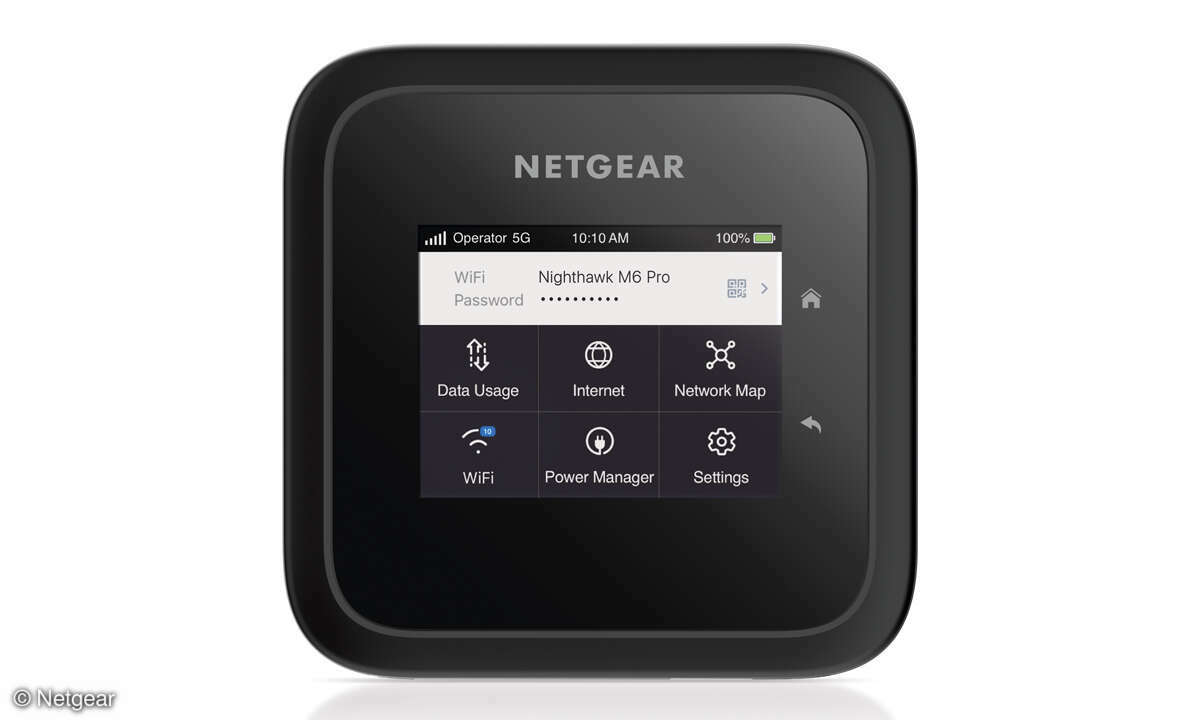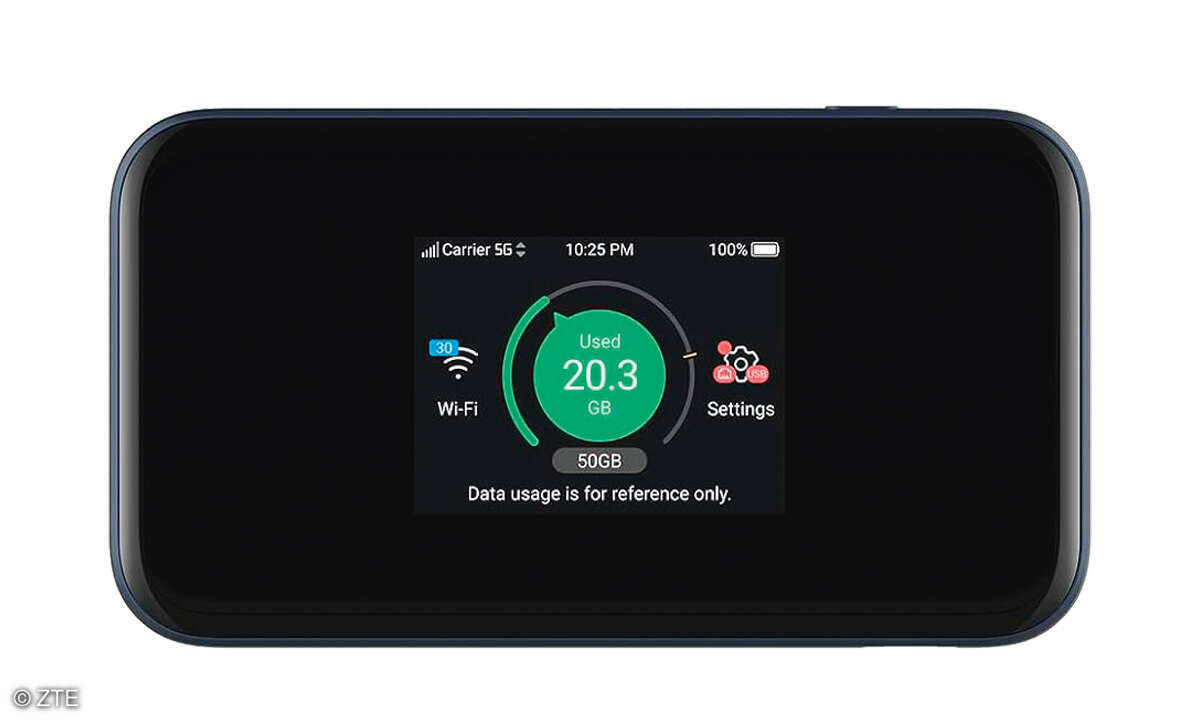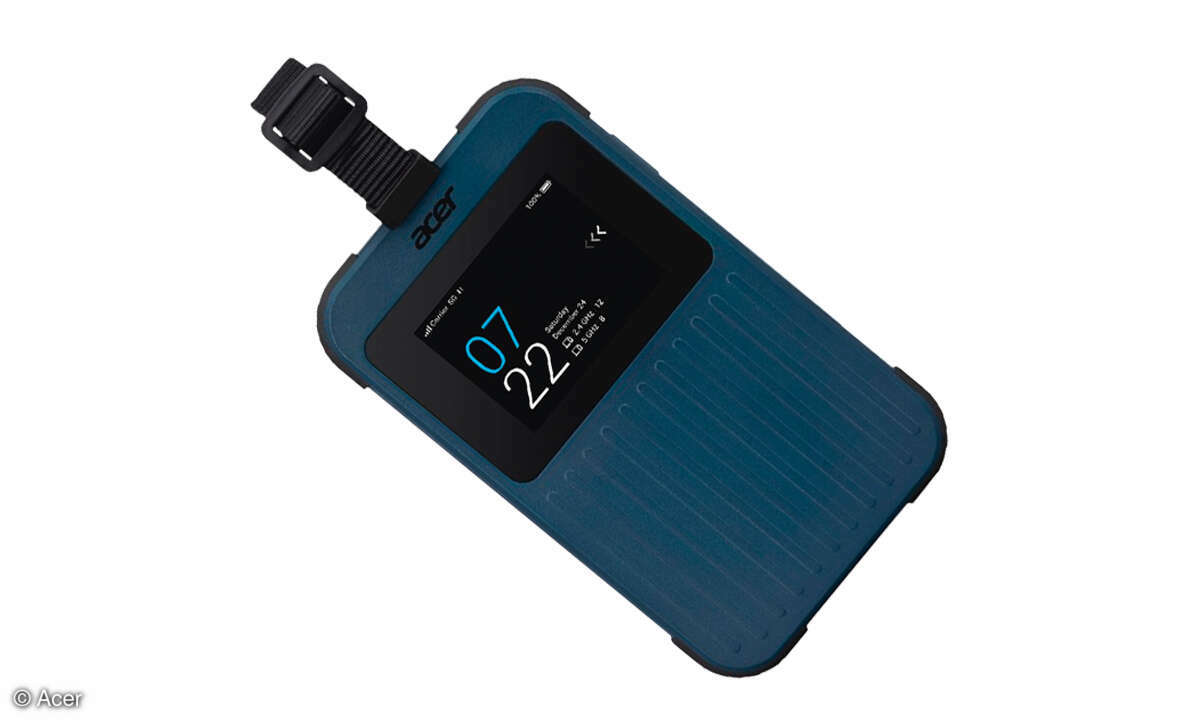Do you still need separate ones today? 5G-Mobile routerwhen every smartphone has its mobile connection via WLAN-Hotspot can share with other devices? The clear answer: “Smartphone tethering” via WLAN or USB cable is usually sufficient for occasional users.
However, things are different for intensive users. Such heavy users benefit from that mobile Router are optimized for their intended use. This means, for example, that they last significantly longer on a single battery charge than a smartphone when using WiFi and mobile communications at the same time.
Designated mobile routers support one larger number von end devices – in our test field up to 32 simultaneous connections. This is worthwhile, for example, when traveling work groups share a mobile Internet connection with each other. A smartphone quickly collapses under such load.
Mobile routers are fully-fledged routers – unlike a smartphone
There are also equipment and comfort aspects: some mobile routers come with one LAN socket on – you definitely won’t find that on smartphones. And mobile routers offer additional functions that can be set as required, such as separate or shared SSIDs for the different WLAN frequencies WiFi guest networkone configurable firewall and much more – they also have these properties ahead of smartphones that simply pass on their mobile phone connection.
In this comparison test, we extensively tested five current mobile routers. We focused on devices with 5G support concentrated – because the fifth generation of mobile communications is technically the state of the art and its advantages are particularly evident when using intensive data. Although the 5G coverage in Germany is now very broad, the devices also switch over when necessary 4G network back. The price range in our test field is also wide, ranging from 130 to 1000 euros (RRP). Read for yourself whether more expensive is always better.
The test field:
1. Platz: Netgear Nighthawk M6 Pro
Test winner
5G-Mobil-Router
NetgearNighthawk M6 Pro
Additional information
Tested by the PCgo/PC Magazine editorial team
2nd place: ZTE MU5001
3rd place: Zyxel NR2301
Winner price/performance
5G-Mobil-Router
ZyxelNR2301
Additional information
Tested by the PCgo/PC Magazine editorial team
4. Platz: Acer Connect Enduro M3
5. Platz: Jectse 5G-Router ebk3768e5
Test Procedure – Mobile Routers
We evaluate the equipment based on the technical data published by the manufacturers as well as our own tests. We assess the operation of the devices in practical use.
Measurements in the 5G live network
We carried out the data throughput measurements in the Telekom 5G network at a location with a good 5G non-standalone connection. This means we don’t necessarily record the maximum possible data rates – but since all devices were measured at the same location, the values determined are easily comparable.
Expert opinion: Hannes Rügheimer, author
The Netgear Nighthawk M6 Pro, offered for 1000 euros, confidently wins the test; any other result would have been surprising. If you are looking for more moderate price-performance ratios, you will find convincing offers with the ZTE MU5001 and the Zyxel NR2301. The Acer Enduro Connect M3 scores with its robust construction and high battery capacity. The quasi-no-name offer from Amazon, the Jectse ebk3769e5, clearly falls behind the other devices. Since it only offered 4G in the test, we recommend buying an older 4G model for a similar budget.
Info: 5G Non-Standalone vs. Standalone
The 5G networks that have been built in Germany since 2019 initially used the non-standalone network architecture: they shared the network infrastructure – especially elements of the so-called core network – with the previous 4G network. This made it easier for network operators to set up and also brings advantages if a device has to switch back from 5G to 4G due to poor reception quality.
The devices have to cooperate
However, German operators are now increasingly supplementing their networks with 5G standalone – an independent 5G network that no longer shares any core network components with 4G. Telekom, Vodafone and O2 are converting individual cells to standalone operation – but the end devices also have to be able to cope with this network technology, which neither smartphones nor mobile routers can do. O2 therefore offers 5G SA as a separate option that the customer must book specifically – currently free of charge. At Telekom and Vodafone you can get 5G-SA radio cells if the device and network cooperate. The newcomer 1&1 is only setting up its 5G network as a 5G standalone from the outset.
Source: www.connect.de






